* Monarchs mating and laying eggs
* The caterpillar grows (this page)
* The butterfly emerges from its chrysalis
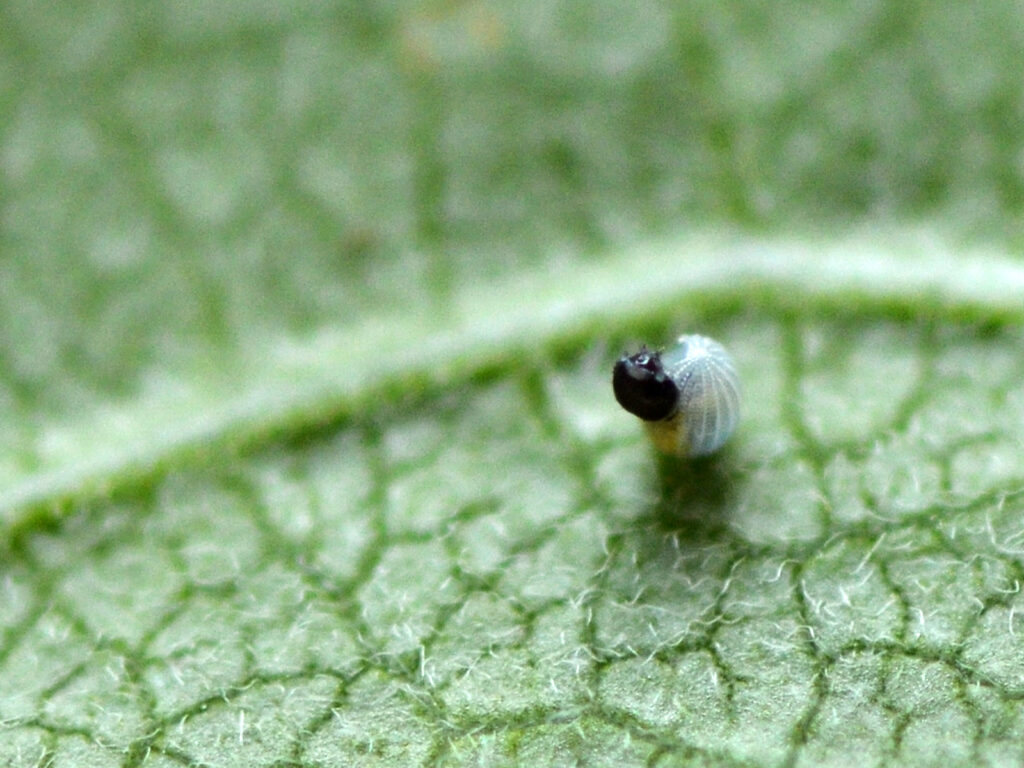
The caterpillar is starting to emerge.
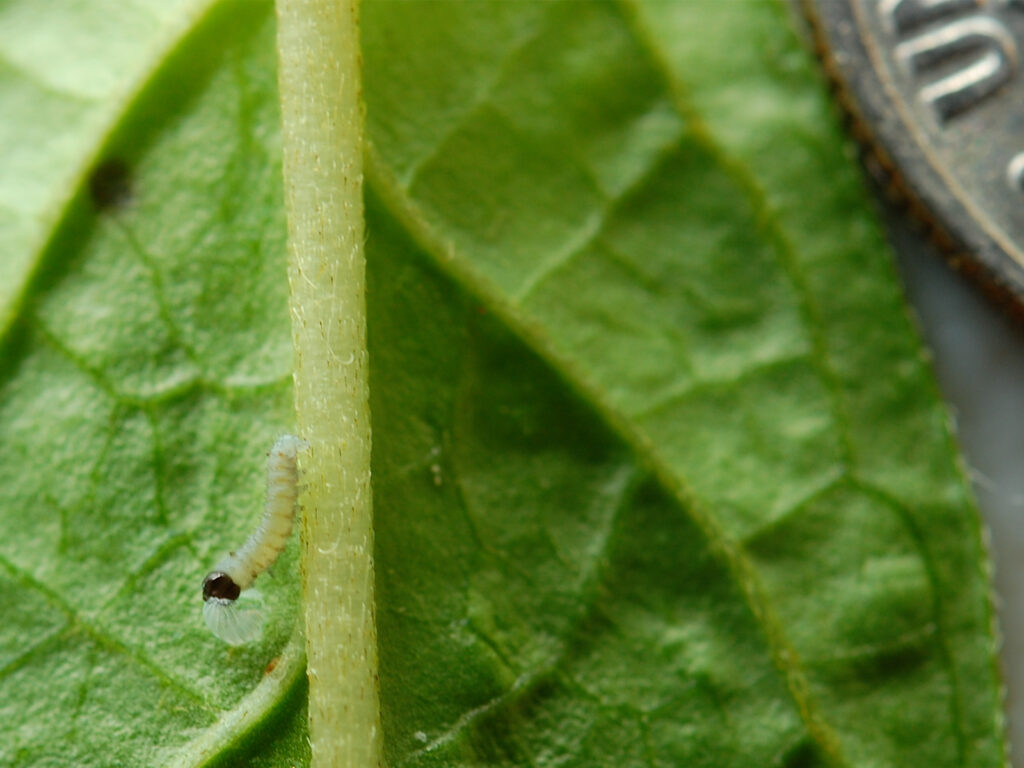
After emerging from its egg, the newly-hatched tiny caterpillar eats it. As environmental designers say, in nature “Waste = Food,” or as people long ago (before our culture of disposables) used to say, “Waste not, want not.”
This just-hatched caterpillar is the first of five stages of growth called instars. In other words, as it gets too big for its skin, it molts so it can continue to grow. Before each molt, it just sits around for about a day.
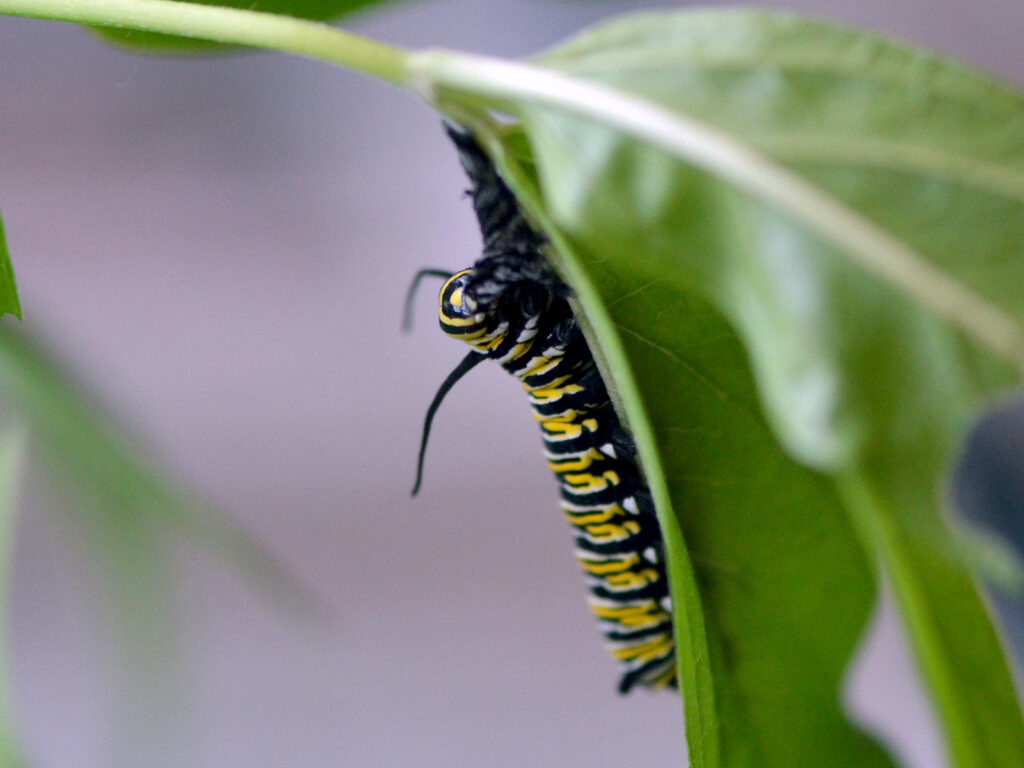
Then, just as the eggshell doesn’t go to waste, neither does its old skin.
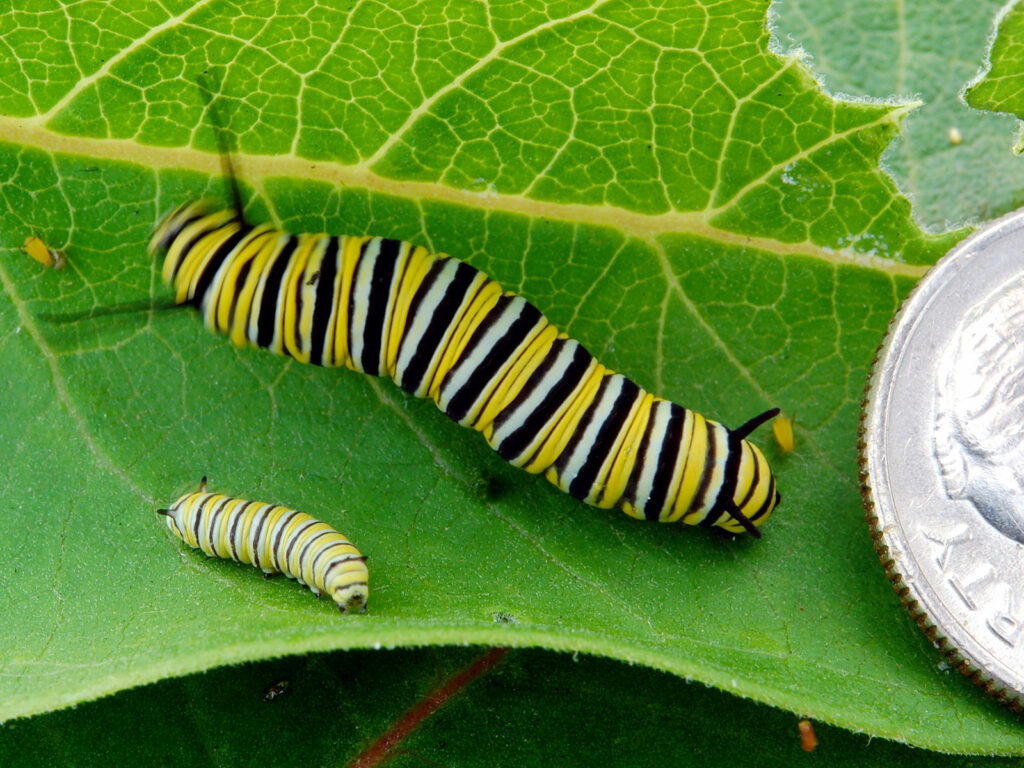
Here are two of the five instars. I’d guess that the little one is a third instar and the big one is a fifth, but I’m rarely confident that I identify the different instars correctly.
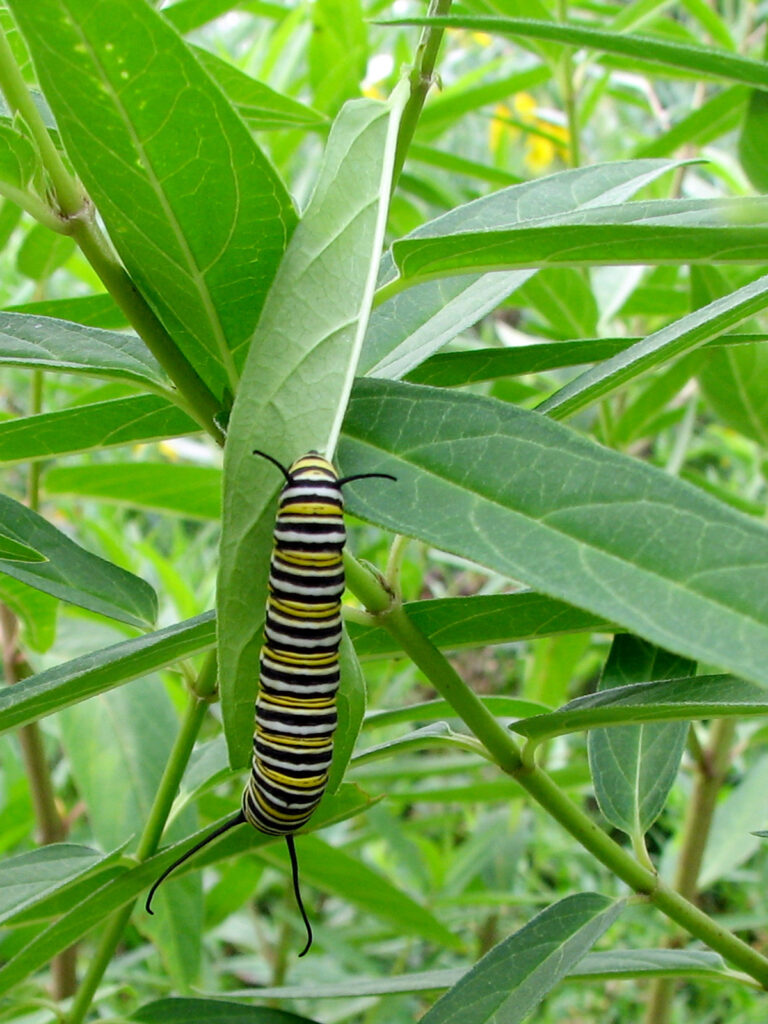
This caterpillar has notched the stem of the milkweed leaf, a practice called “flagging.” This makes the leaf hang down, protecting the caterpillar somewhat, and reducing the flow of latex, minimizing the chances of this sticky stuff gumming up his mouth.
The fifth stage is the last one. Soon it will pupate and become a chrysalis.
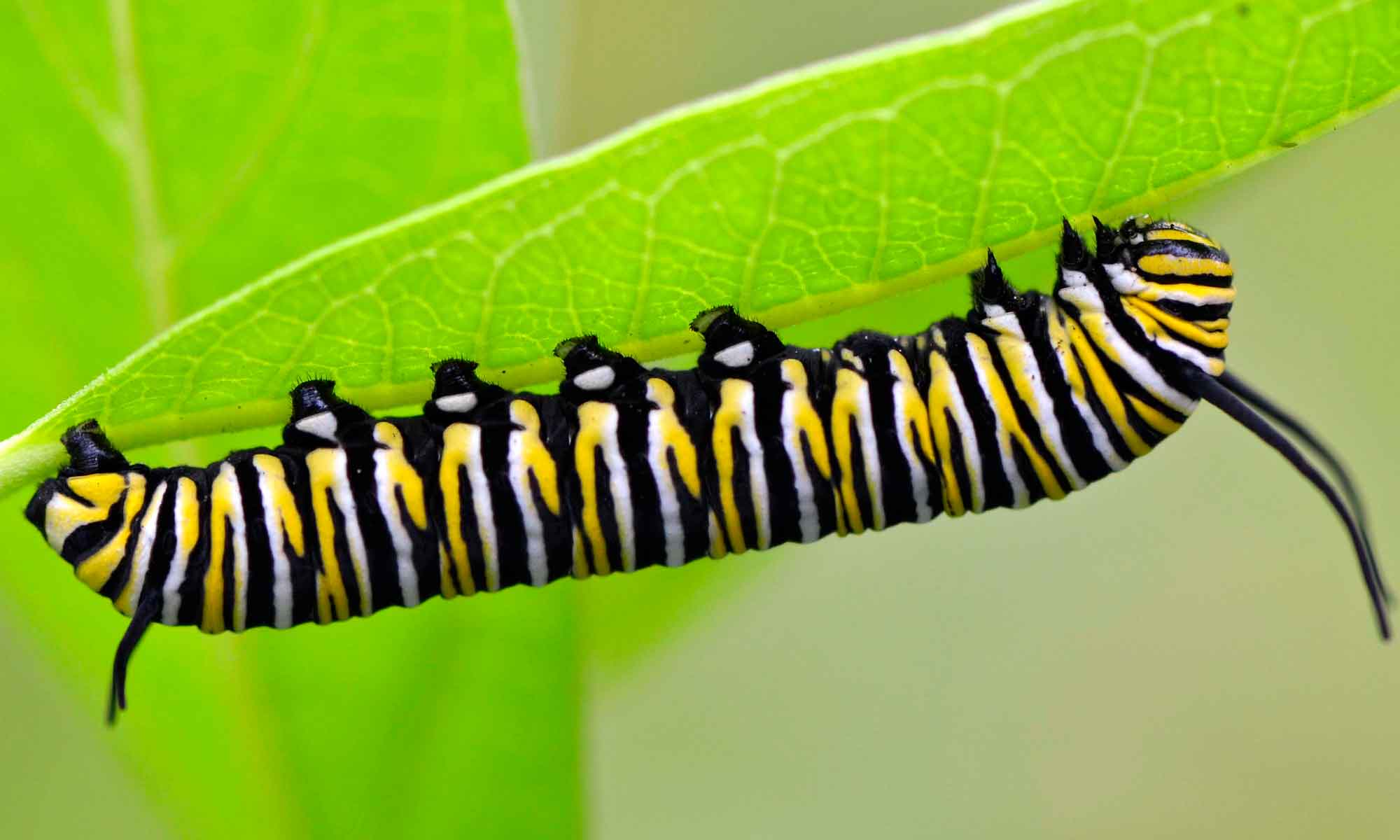
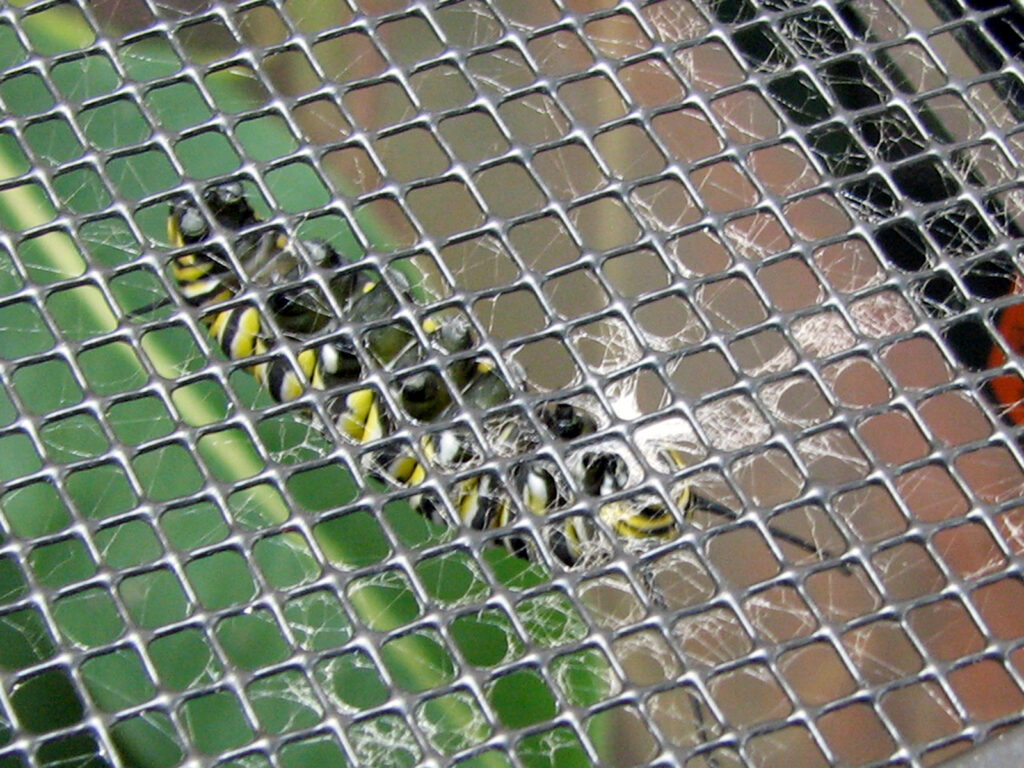
It becomes very restless as it searches for a place to attach. (I’m raising this one inside so the screen is on the top of the aquarium.) Outdoors, it tends to travel quite far from its host plant. Inside the aquarium, it just crawls around and around until it’s ready. The caterpillar is creating a silk pad (at the mouth end).
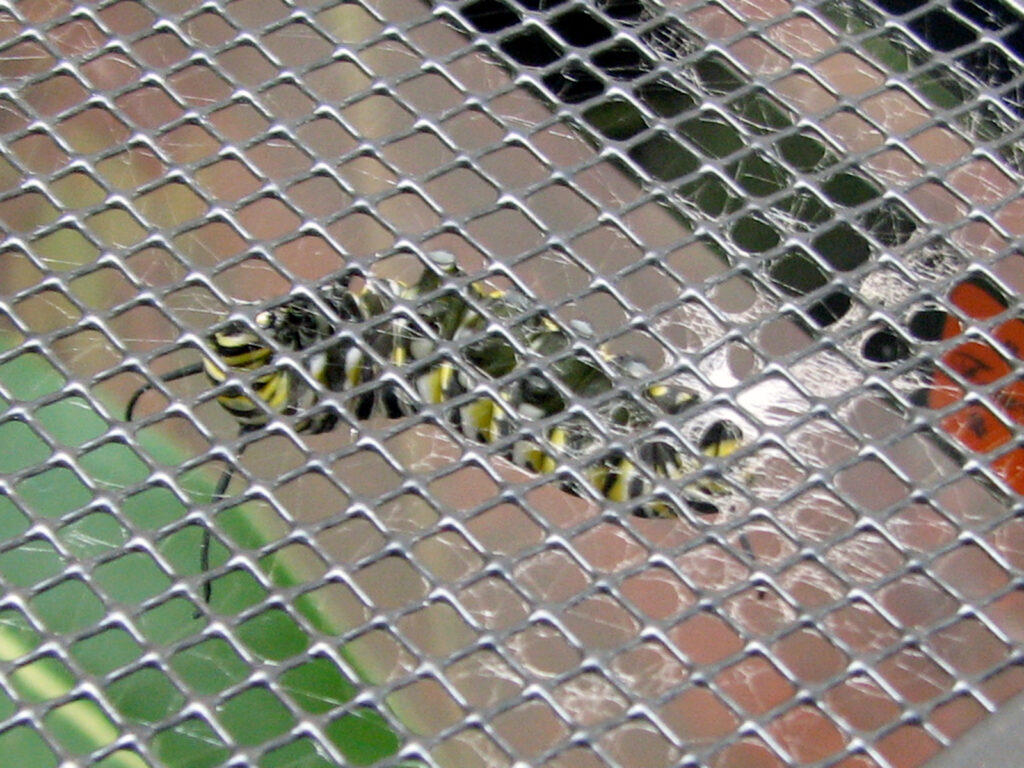
It later turns around and attaches its rear end to this pad.

When we first started noticing monarchs and their caterpillars, we often checked the milkweeds to see a chrysalis. We never did. Where were they? Then I noticed one hanging on a plant quite far from the patch of milkweeds in our roadside flower bed. He evidently moved quite a distance to pupate — especially remarkable given its short little legs!
When I raised some inside (which we rarely do anymore), I noticed that when they were ready to pupate, they restlessly went around and around the whole aquarium before they finally settled down (usually on the top cover of the aquarium). When we thought about it, though, it makes sense. Where would predators look for you? On your food plant, of course!
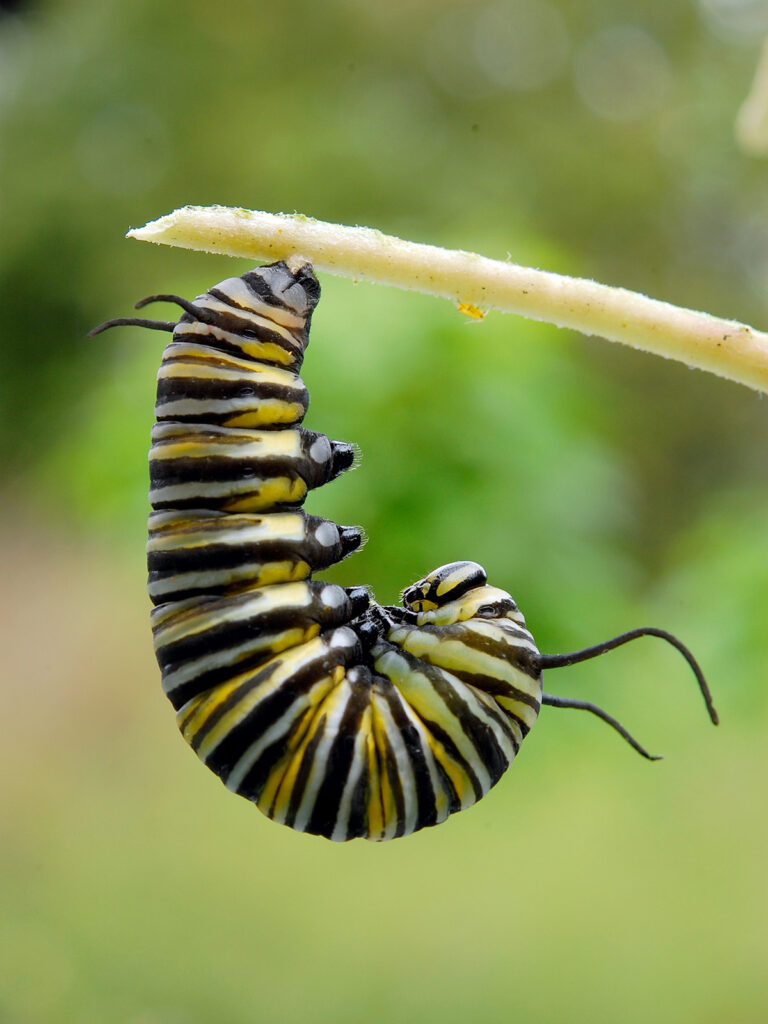
Here’s a caterpillar attached to the underside of a leaf stem in its characteristic “j” shape.
It’s just hanging here and is no longer eating.
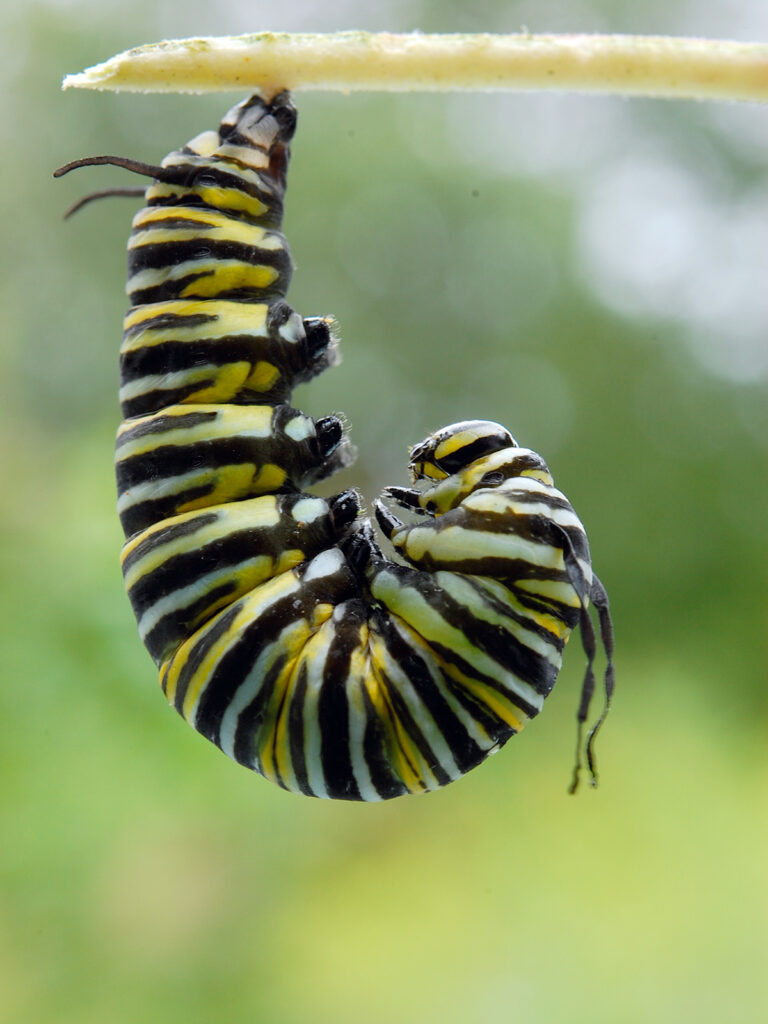
This one has hung around for a while (the higher the temperature, the shorter the time) and is soon going to pupate.
How do I know? Look at its droopy tentacles (compare to the preceding photo).
I assume that means that it has detached from its soon-to-be-discarded skin, but I’m just guessing.
NOTE: Contrary to common belief, it does NOT spin a cocoon! Moths create cocoons, not butterflies.
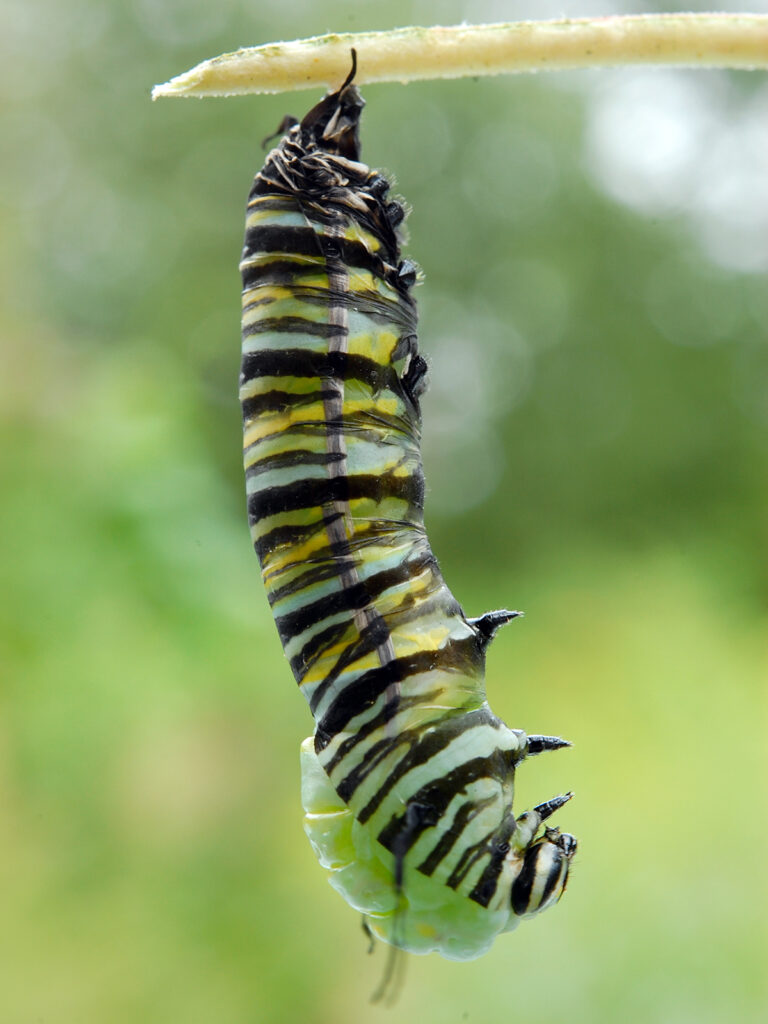
Here the caterpillar is starting to pupate.
You can see that it’s NOT spinning a cocoon — the skin just splits at the head end (at the bottom of the photo) and the green chrysalis begins to appear. Note how the old skin at the top is starting to wrinkle.
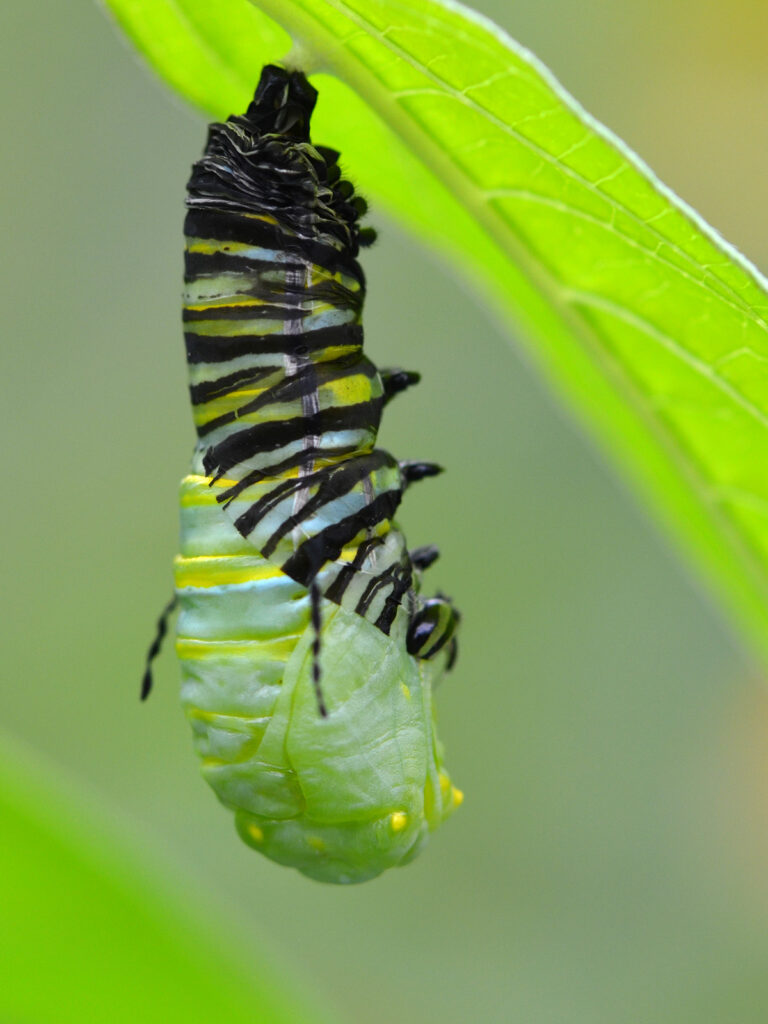
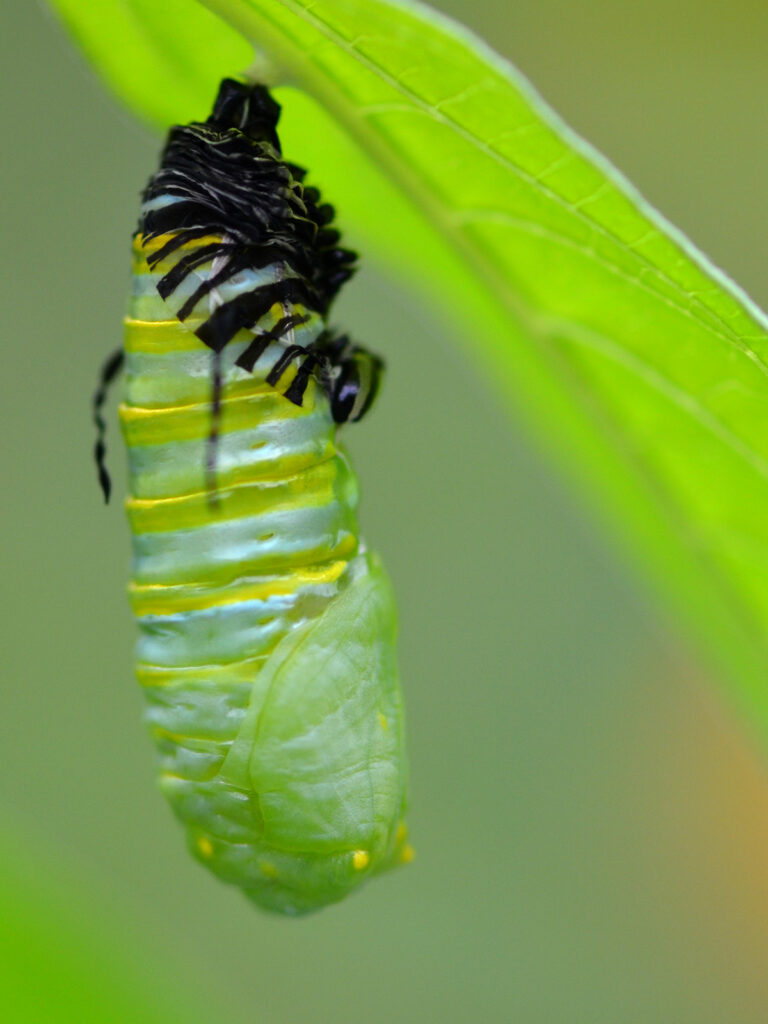
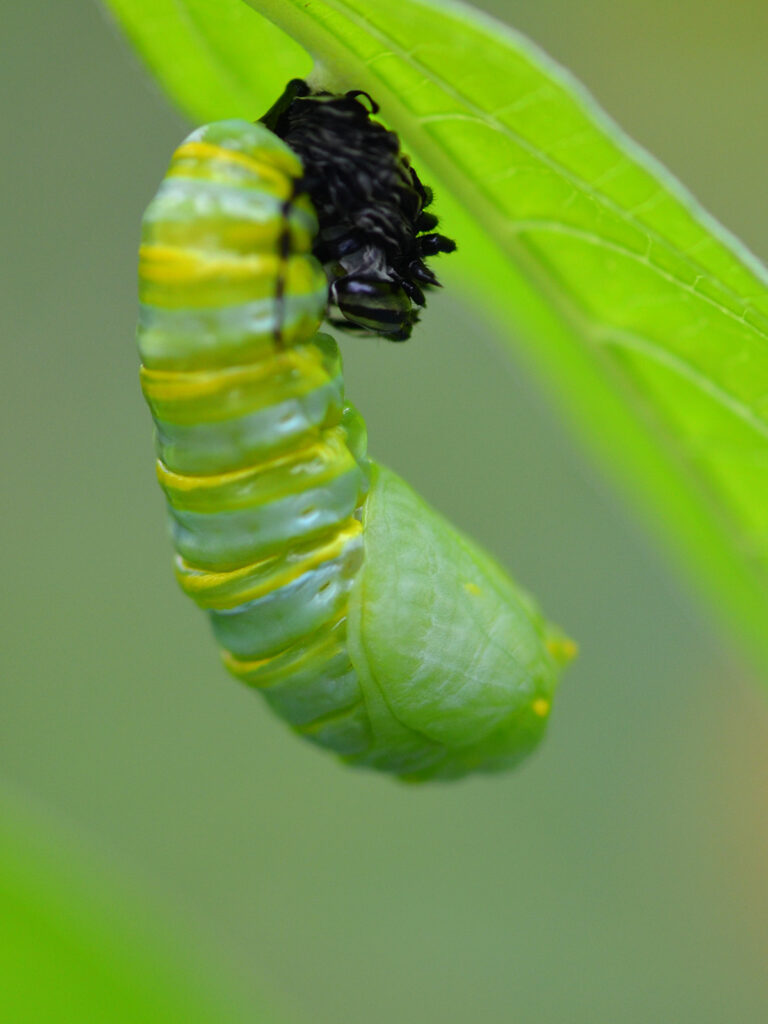
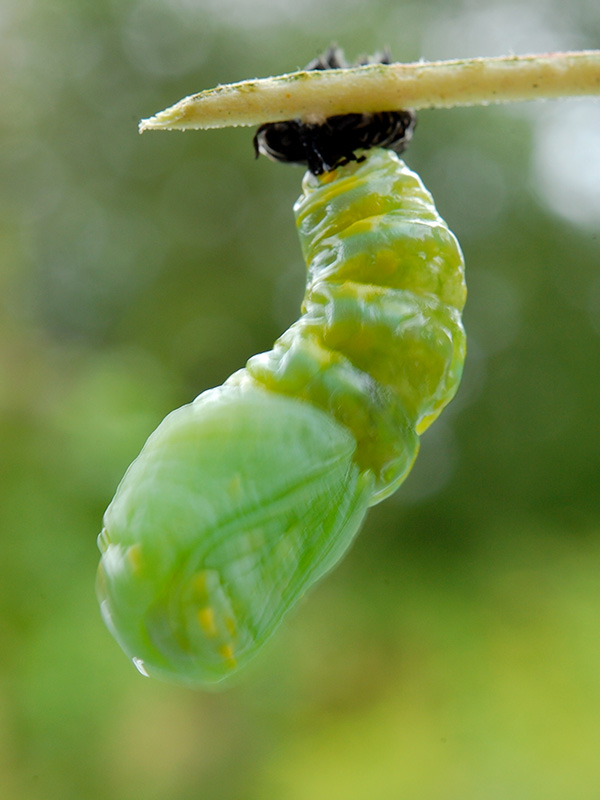
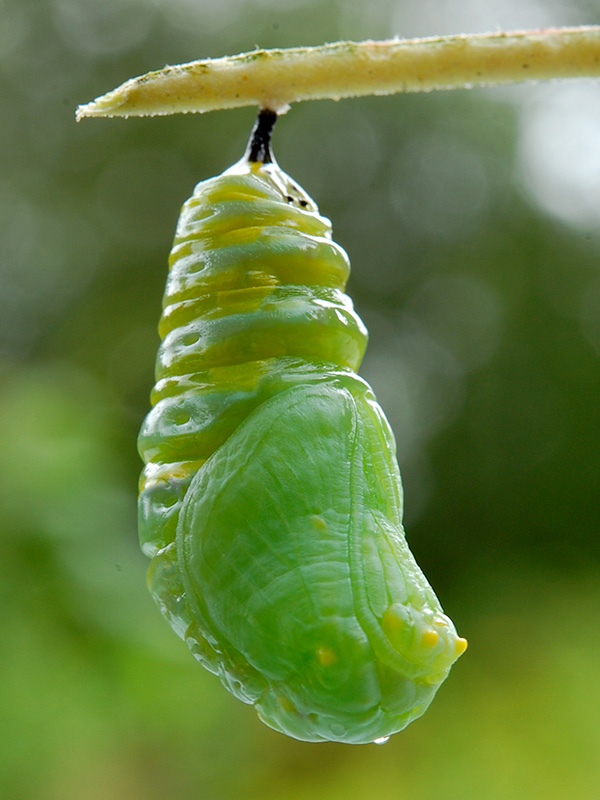
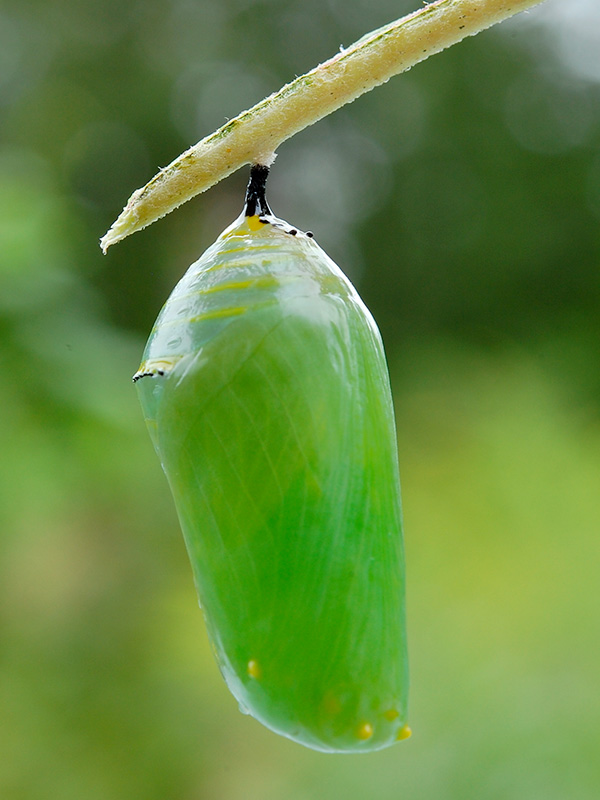
After a LOT of wiggling, the old skin drops off. It doesn’t yet look like the chrysalis you usually picture, though. The wing area is becoming smoother and broader. The ridges at the top are the future-adult butterfly’s abdomen area. The head is at the bottom.
The wing area is becoming smoother and broader. The ridges at the top are the future-adult butterfly’s abdomen area. The head is at the bottom.
This is the “finished product” at least for the caterpillar stage. Now we have to wait about two weeks, though the exact timing depends on temperature.
It’s amazing how much faster it goes through these the stages when it’s especially warm — a noticeable difference. (And how will climate change affect this process?)
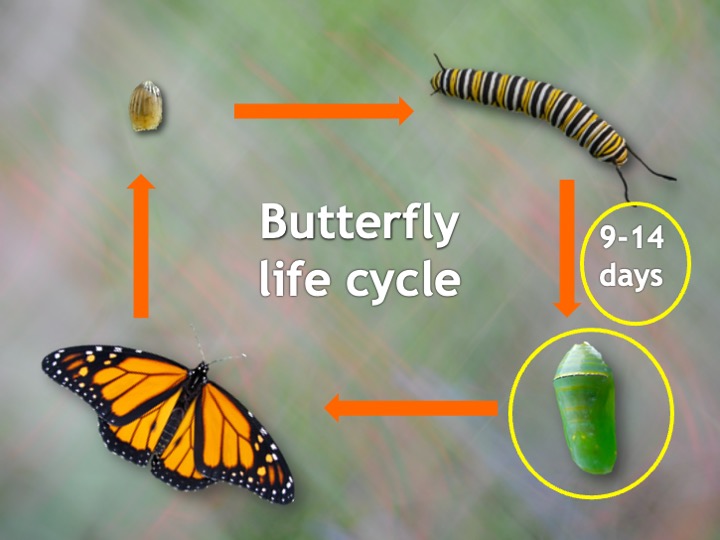
They come in different sizes
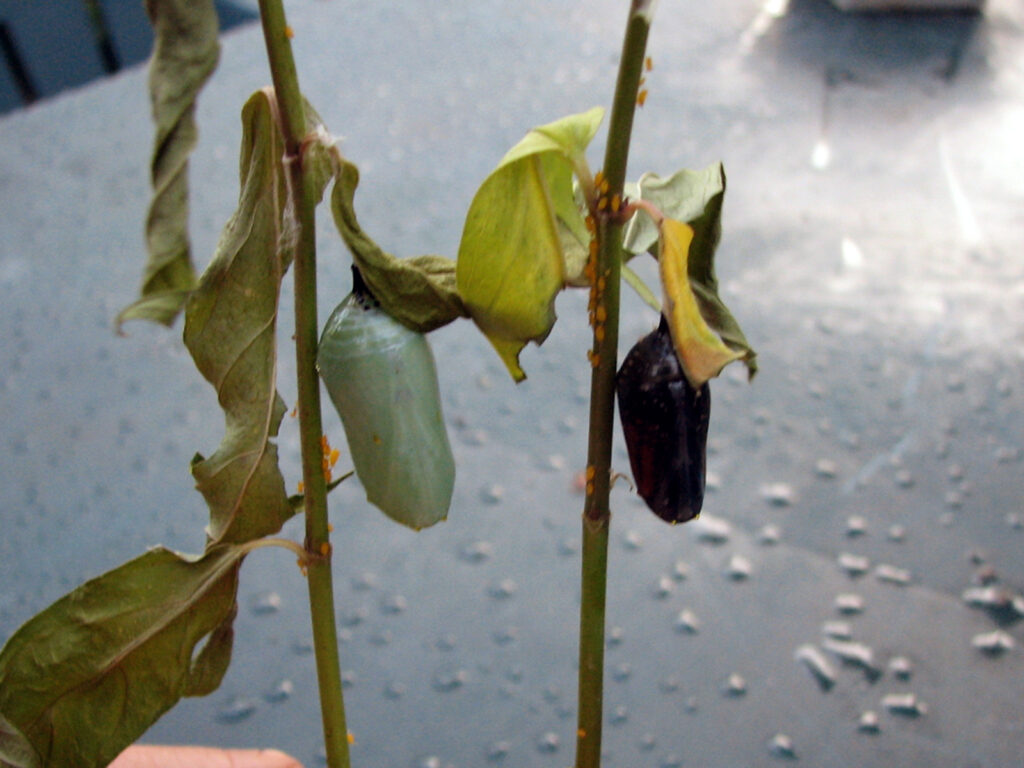
Just as with people, pupae come in different sizes. I assume it may have something to do with food resources, but I’m guessing.
(The one on the right just happens to be darker because the butterfly will soon emerge. It has nothing to do with size. )
These smaller ones may be less likely to make it to Mexico, which is one reason for caution in raising them inside. They need as many of the the resources and conditions they would have in nature.
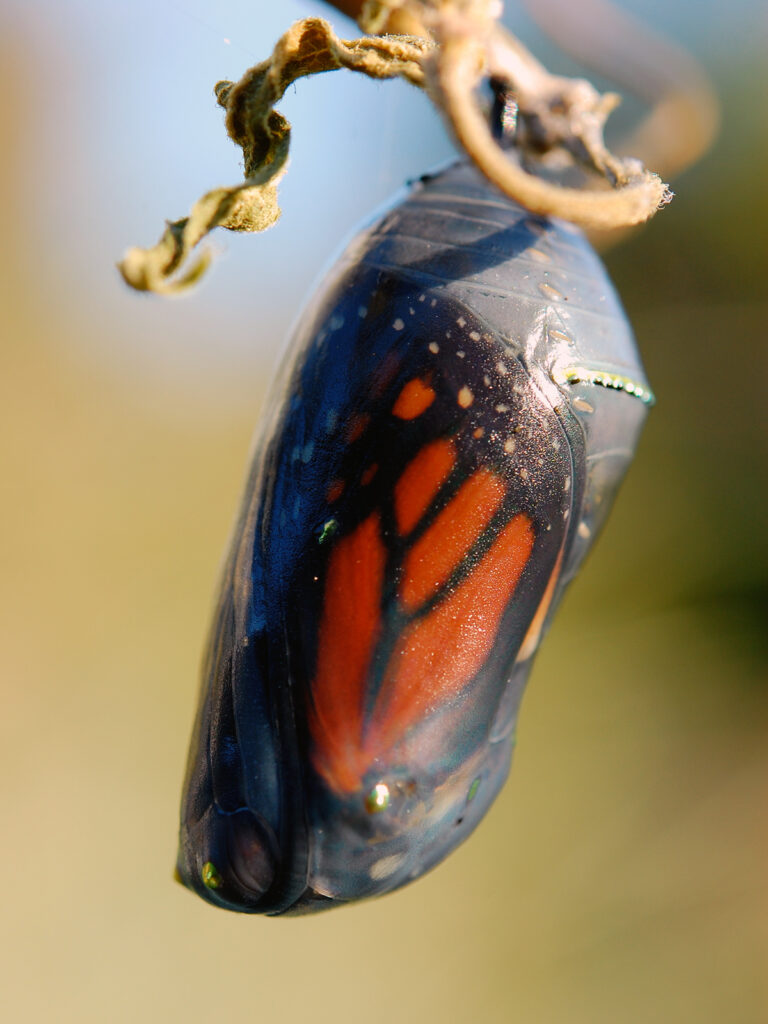
It’s always exciting to see the orange dotted wing through the transparent chrysalis. This means it will soon emerge (or “eclose” to use the technical term).
Resources
- Journey North:
- From caterpillar to chrysalis – AMAZING electromicrograph photos!
- Science News:
- Monarch Watch:
- Monarchchaser’s Blog:
- How monarchs develop – Excellent!
